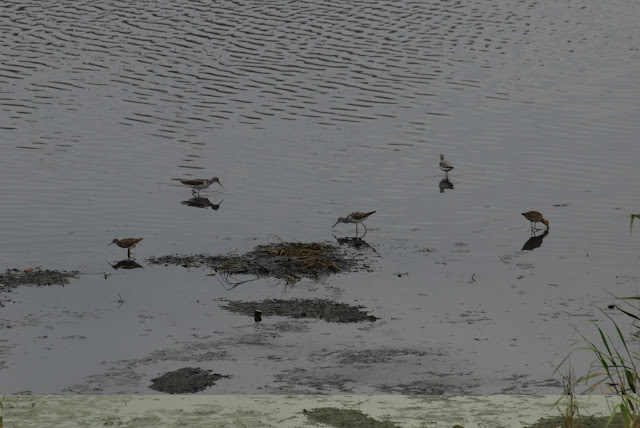Yubudo Island is last refugee for East asian austalian flyway waders in Korean side of yellow-sea costal mudflat. I can quite surely assume that area around reclaimed saemangeum was asia's Largest and most significant wader sating area during both spring and autum migration, but at 2006, the saemangeum reclaimation was finished, and since then, Yubudo Island functions as an insufficient but the only "workaround" for the exhausted, long traveling waders.
At 20, August, 2012 I visited Yubu island with Dr. Chung, my Guru of birding and studying.
I was expecting several spoon-billed sandpipers and other flagged, or ringed birds, but the weather was unfortunate, harsh rain and wind made us difficult to make us search.
The first waders of that day was several sanderlings and Kentish plovers, running and foraging on the sandy beach. Between those bird, Dr.Chung first noticed this bird was ringed.
Waders of yubu island. 20, 8,2012 : Dunlins, Lesser sand plovers, kentish plovers, terek sandpipers, Red necked stints, sanderlings were most abundant small waders of this day,
In my aprox. count, more than 30 thousand shorebirds were staging there, and due to the rain and wind, I couldn't conduct any more scrutiny.
because I also had to find this trip's prize, the SPS.
if you look above photo with inner sight of birding, youmight find one adult SPS at the right-upper coner
I observed one adult in stunning breeding plumage and one juvinile from this year's breeding.
we met american birder, who works for NGO in korea, told us that he counted up to 5 SPS that day.
and like waders, searching for energy supplement at this staging area, there was another bird in search of daily meal.
Eurasian hobby swooping the waders.
It was very high tide at that day and most of other birds flew away and only small numbers apporached to the handful left land. See that sandlovers in breeding plumage, how striking orange! they just added color at the grey rainning mudflat.
and right before we leave, we found this poor great knot, who got it's lower manible caught by a small clam.
he was not able to fly easily and he looked very exhausted.




























